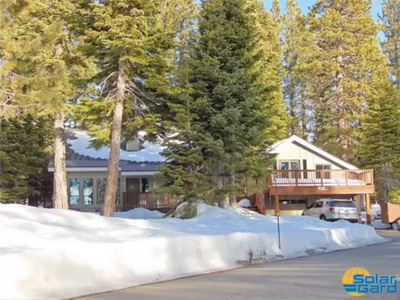Will film also stop heat from going out?
Many are surprised to learn that the answer is generally no. Window film can greatly reduce heat coming in without effecting heat going out. The reason for this is found in understanding the electromagnetic spectrum and infrared energy in particular.
In a similar way that we divide up the visible spectrum into its various colours, the infrared spectrum can be divided into at least three sections. 'Near infrared' energy is the part that is close to the visible spectrum and is stopped by solar control film to reduce the heat coming in.
However the human body or a heater radiates 'far infrared' which passes freely through sun control film. In fact the metal coatings in some sun control films are more likely to increase the transfer of heat from air into the glass rather than reduce it. This is easy to verify by looking at the U-value (also called U-Factor) of a given film.
Example: If the U-Value = 1 W/m²C and the temperature inside the room is 18ºC and outside is 0ºC. Then 18Watts of heat energy is exiting through every 1 m² of window every hour.You can find the Winter U-value of each film in the Performance Data table on each Product Page.
As a guide here is a list of typical Winter U-Values.
Please note that Winter U-values for Window Film are calculated on a set of conditions for inside temperature, outside temperature and wind speed that may differ from other building products and so they are not directly comparable.
- Glass only: 5.68 W/m2C.
- Typical aluminium frame with single clear glass: 7.4 W/m2C
- Typical timber frame with single clear glass: 5.5 W/m2C
- Typical Silver Window Film on clear glass: 5.48 W/m2C
- Ecolux 70 in typical Timber window: 3.5 W/m2C
- Typical double glazing: 2.9 W/m2C
- Double insulated Low-E glazing 24 mm with argon filling: 1.1 W/m2C
- Triple insulated Low-E glazing 36 mm with krypton filling: 0.5 W/m2C
- Brick & Plaster Wall 1.76 W/m2C
It would be fair to say that a Control Window Film is working as a shade rather than an insulator. This contrasts directly with double glazing which acts as an insulator and not as a shading device.
The exception
There are some films that are manufactured with a Low-E coating. These films can be compared by looking at their Emissivity. The closer the value is to zero the less heat is absorbed into the glass and so heat passes out through the window more slowly.
We have used Solar Gard Silver AG25 and 3M LE35AM ARL extensively. While these products are no longer available, Solar Gard have released a Super Low-E film called Ecolux 70. Ecolus is much lighter and will suit many residential applications.
According to Rob Hamilton from Solar Gard Australia, "Solar Control focuses on reducing cooling energy: improves Solar Heat Gain Co-efficient (SHGC) & Total Solar Energy Rejected (TSER)
Thermal Control focuses on reducing heating energy: improves Emissivity & U-factor.
Low-E films excel by controlling both: Near & Far–Infrared Energy resulting in more annual energy savings."


